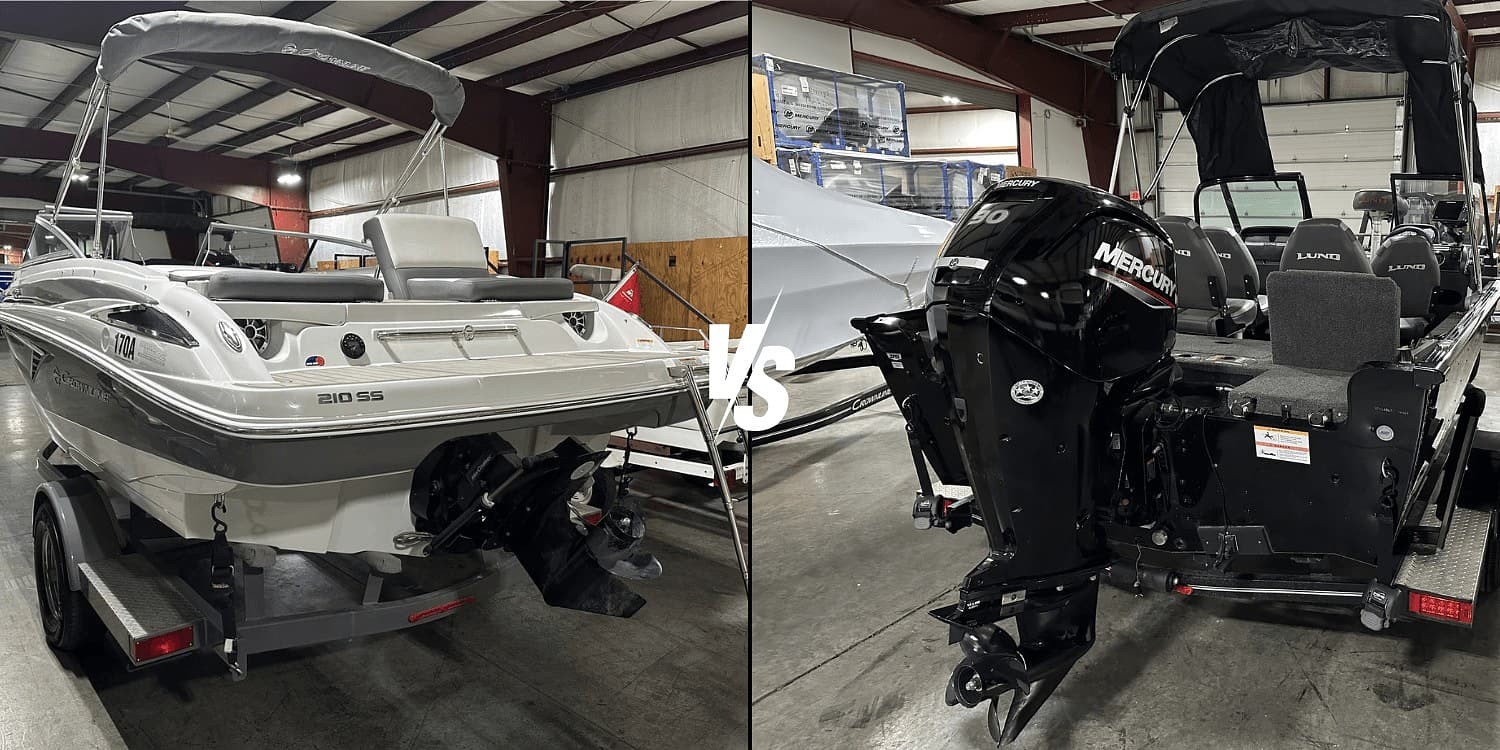Choosing the Right Motor for Your Boating Needs
Family boats often come with either an inboard or outboard motor. This includes styles like cabin cruisers and bowriders. If you're looking at new or used boats and see both options, which one should you choose? Let's take a closer look at what each one means for your boating experience.
Main Differences Between Inboard and Outboard Motors
Boats with an inboard motor are often called an inboard/outdrive. This combines an automotive-type engine inside the boat with a steerable and trimmable outside drive. The main exception to this is with tow boats for watersports. Outboard motors are made specifically for marine use and are attached to the stern on the outside.
The power from these varies greatly, but you can get outboards that are just as powerful or more powerful than inboards. You can also get very small outboards for a small fishing boat, which isn’t possible with an inboard.
Cost Comparison
Horsepower isn’t the only factor to consider when comparing motor types. For example, a 200 hp outboard can deliver similar performance to a 250 hp inboard due to its lighter weight and more efficient design. In terms of cost, inboard motors are generally more expensive, especially when you factor in the added expense of an outdrive or v-drive system. These components can significantly increase the price of both the initial purchase and future repairs. In contrast, outboards tend to be more affordable up front and over the life of the boat.
Maintenance Costs and Ownership Experience
Thanks to its lower weight and more efficient design, an outboard motor generally has better fuel economy than an inboard. Both motors require some kind of annual maintenance, and an inboard will generally need an antifreeze flush if you live in a cold climate.
Outboards are easier to maintain without the need for a marine service center. Outboard motors can also be tilted all the way up to clear the water for service, while the outdrive of an inboard motor cannot. Working on an inboard motor often requires professional service, but outboards are much easier for the DIY owner.
Additional Pros and Cons
Ultimately, outboard motors have several advantages over an inboard/outdrive setup. They're lighter, faster, more efficient, and much easier to service. The location of the outboard motor outside the boat also allows for more room in the boat for storage or seating. New outboards tend to be cleaner and quieter than old outboards, which is why they tend to be more popular now than ever before.
An inboard/outdrive setup does have a few advantages over outboards. The drive unit sits lower on the transom, allowing for a swim platform that isn't hampered by the outboard. This results in a more uncluttered look and a place for lounging. Inboard boats can be equipped with forward-facing propellers to allow for wake surfing. It's not safe or legal to wake surf behind a boat with an outboard or traditional sterndrive.
Choosing between the two types will likely depend on your budget, the type of boating you want to do, and whether you want the ability to work on your own motor or not. Come see our selection of family boats, fishing boats, and boats for watersports at Reeder-Trausch Marine Indy. Our knowledgeable team can help you decide which type is right for you.


